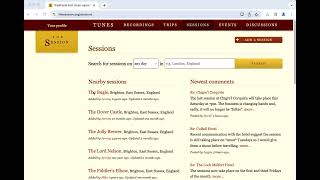Making the website for Research By The Sea
UX London isn’t the only event from Clearleft coming your way in 2025. There’s a brand new spin-off event dedicated to user research happening in February. It’s called Research By The Sea.
I’m not curating this one, though I will be hosting it. The curation is being carried out most excellently by Benjamin, who has written more about how he’s doing it:
We’ve invited some of the best thinkers and doers from from in the research space to explore how researchers might respond to today’s most gnarly and pressing problems. They’ll challenge current perspectives, tools, practices and thinking styles, and provide practical steps for getting started today to shape a better tomorrow.
If that sounds like your cup of tea, you should put February 27th 2025 in your calendar and grab yourself a ticket.
Although I’m not involved in curating the line-up for the event, I offered Benjamin my swor… my web dev skillz. I made the website for Research By The Sea and I really enjoyed doing it!
These one-day events are a great chance to have a bit of fun with the website. I wrote about how enjoyable it was making the website for this year’s Patterns Day:
I felt like I was truly designing in the browser. Adjusting spacing, playing around with layout, and all that squishy stuff. Some of the best results came from happy accidents—the way that certain elements behaved at certain screen sizes would lead me into little experiments that yielded interesting results.
I took the same approach with Research By The Sea. I had a design language to work with, based on UX London, but with more of a playful, brighter feel. The idea was that the website (and the event) should feel connected to UX London, while also being its own thing.
I kept the typography of the UX London site more or less intact. The page structure is also very similar. That was my foundation. From there I was free to explore some other directions.
I took the opportunity to explore some new features of CSS. But before I talk about the newer stuff, I want to mention the bits of CSS that I don’t consider new. These are the things that are just the way things are done ‘round here.
Custom properties. They’ve been around for years now, and they’re such a life-saver, especially on a project like this where I’m messing around with type, colour, and spacing. Even on a small site like this, it’s still worth having a section at the start where you define your custom properties.
Logical properties. Again, they’ve been around for years. At this point I’ve trained my brain to use them by default. Now when I see a left, right, width or height in a style sheet, it looks like a bug to me.
Fluid type. It’s kind of a natural extension of responsive design to me. If a website’s typography doesn’t adjust to my viewport, it feels slightly broken. On this project I used Utopia because I wanted different type scales as the viewport increased. On other projects I’ve just used on clamp declaration on the body element, which can also get the job done.
Okay, so those are the things that feel standard to me. So what could I play around with that was new?
View transitions. So easy! Just point to an element on two different pages and say “Hey, do a magic move!” You can see this in action with the logo as you move from the homepage to, say, the venue page. I’ve also added view transitions to the speaker headshots on the homepage so that when you click through to their full page, you get a nice swoosh.
Unless, like me, you’re using Firefox. In that case, you won’t see any view transitions. That’s okay. They are very much an enhancement. Speaking of which…
Scroll-driven animations. You’ll only get these in Chromium browsers right now, but again, they’re an enhancement. I’ve got multiple background images—a bunch of cute SVG shapes. I’m using scroll-driven animations to change the background positions and sizes as you scroll. It’s a bit silly, but hopefully kind of cute.
You might be wondering how I calculated the movements of each background image. Good question. I basically just messed around with the values. I had fun! But imagine what an actually-skilled interaction designer could do.
That brings up an interesting observation about both view transitions and scroll-driven animations: Figma will not help you here. You need to be in a web browser with dev tools popped open. You’ve got to roll up your sleeves get your hands into the machine. I know that sounds intimidating, but it’s also surprisingly enjoyable and empowering.
Oh, and I made sure to wrap both the view transitions and the scroll-driven animations in a prefers-reduced-motion: no-preference @media query.
I’m pleased with how the website turned out. It feels fun. More importantly, it feels fast. There is zero JavaScript. That’s the main reason why it’s very, very performant (and accessible).
Smooth transitions across pages; smooth animations as you scroll: it’s great what you can do with just HTML and CSS.



